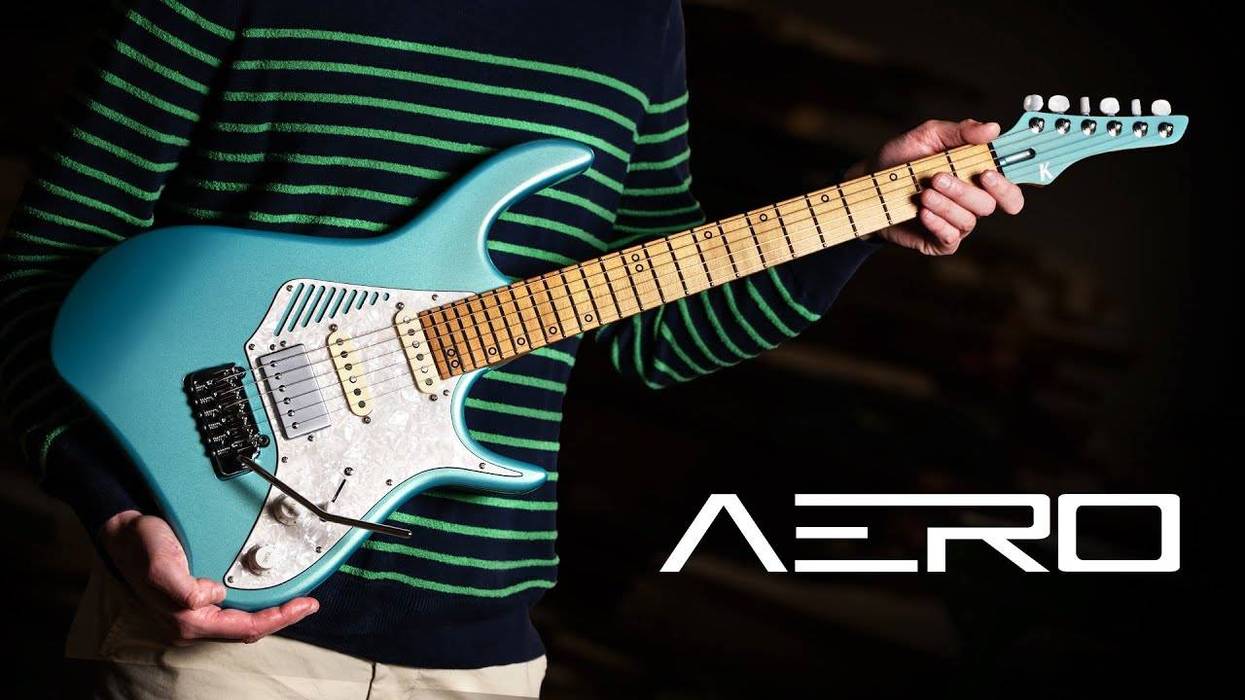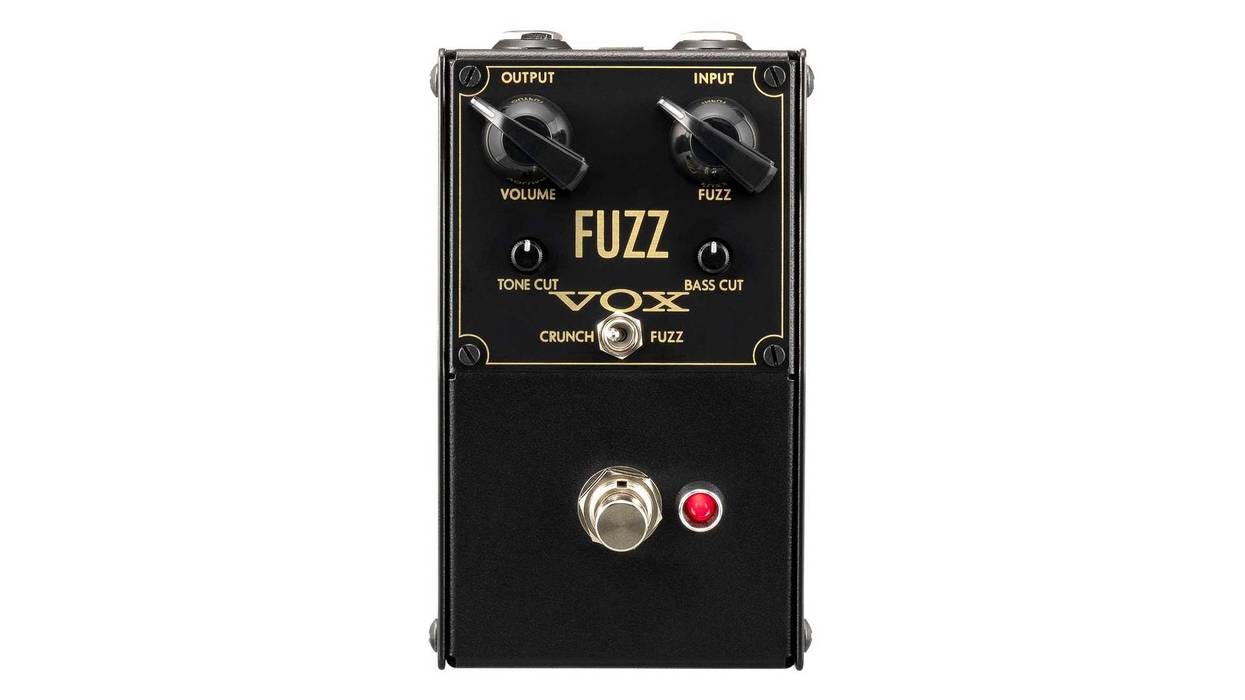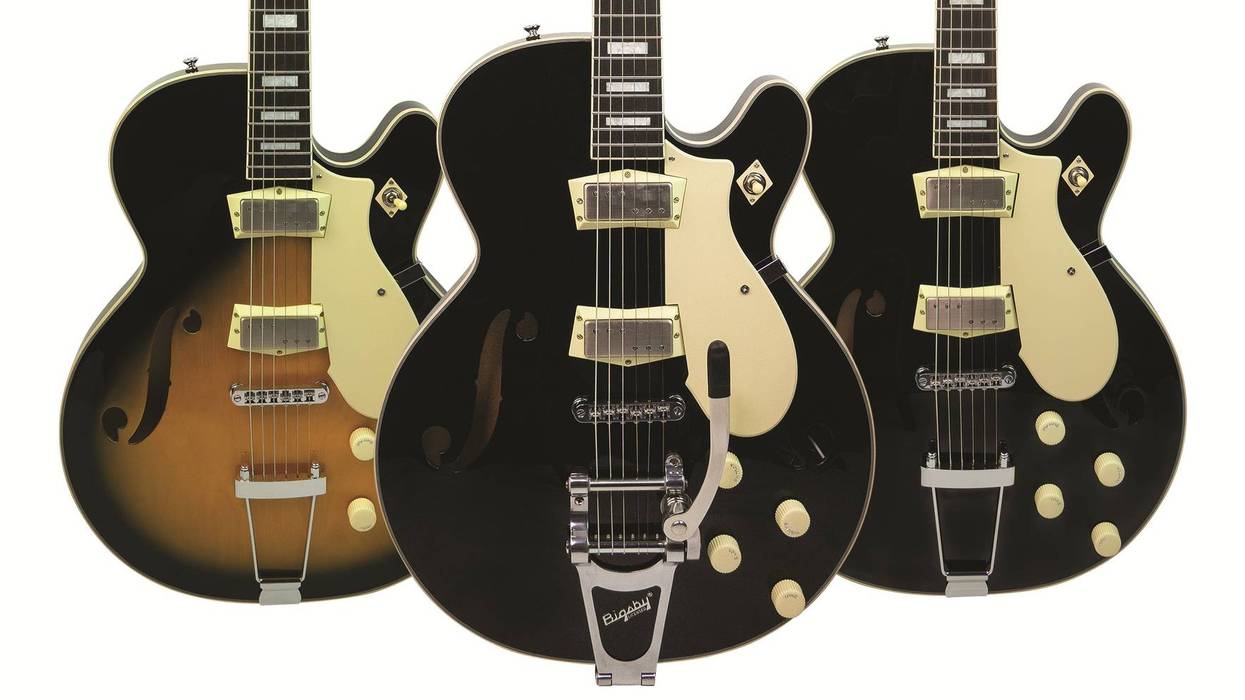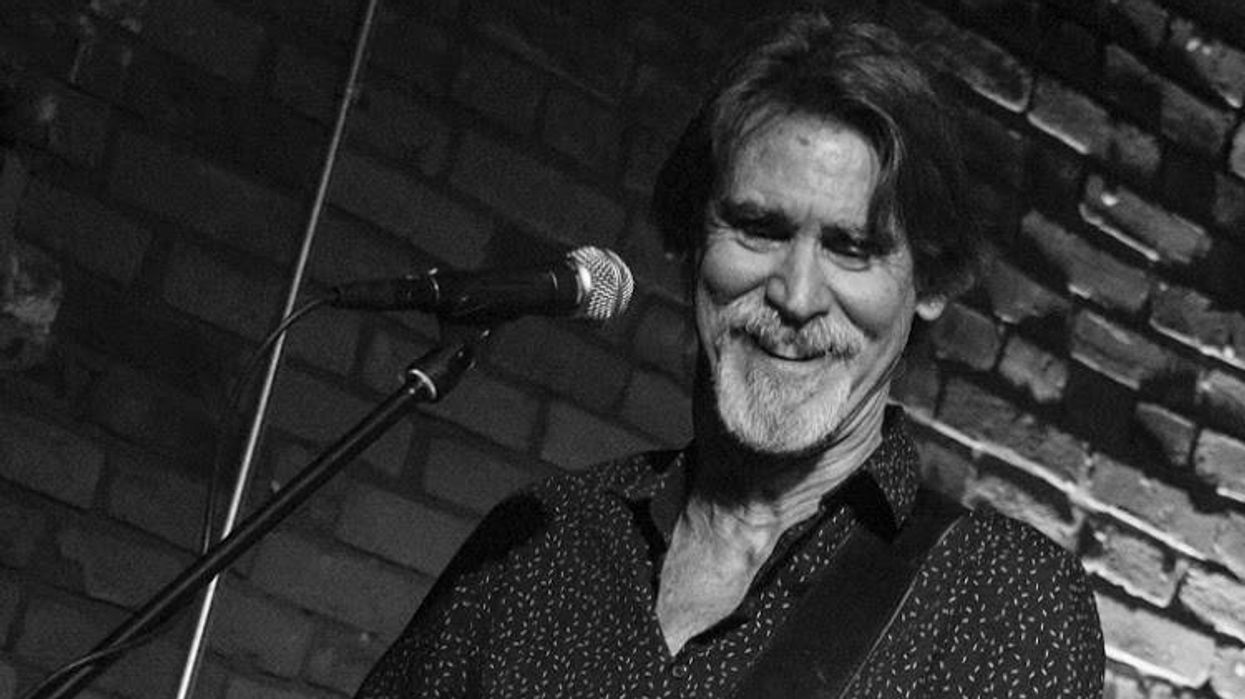In last month’s column, we learned
how scales and arpeggios can be combined
for the construction of line forms
(“Linear Transformations,” May 2011
PG). This month, we’ll continue exploring
the concept as an ongoing extension
of that information.
Similar to chord forms, linear structures are based upon inversions, and those inversions not only have identifiable shapes, but also position themselves in vertical and horizontal positions across the fretboard. The linear arpeggios in our previous study were vertical chord forms that were “flattened” horizontally across the staff with their “skeletons” functioning as the arpeggios of the chord forms themselves—specifically Em7 and Gmaj7 as relative forms.
Often, we use inversions that embody identities that are very recognizable. These shapes are the very skeletons that reside within an improvisation. In Fig. 1 you can see how we move from Ab dim to E7 and then Em7 on the lowest four strings. (Note: In Ab dim, we’re spelling Cb enharmonically as B to make it easier to see the 6th-string common tone shared by all three chords.)
Download Example Audio 1...

In Fig. 2, we shift this same chordal movement to the 4–3–2–1 string set. The voice leading is exactly the same in both examples, with F moving to E and then Ab (or G#) moving to G. I have placed arrows to indicate these movements.
Download Example Audio 2...

We can see the result of combining both Em7 (or G6) voicings in Fig. 3. The upper bracket indicates the shape from Fig. 2 and the lower bracket indicates the shape from Fig. 1.
Download Example Audio 3...

Chord forms and linear patterns are very similar. Both have specific shapes, and once they become familiar, these shapes begin to appear as inversions and transpositions across different areas of the fretboard. You can see Fig. 4 as an example of how to combine two separate linear arpeggios—both of the forms illustrated with vertical brackets in Fig. 1 now appear horizontally. The arpeggios appear in red (vertically beamed lower) while the upper beams hold melodic additions completing the full pattern.
Download Example Audio 4...

Once again, it’s essential to remember that the pattern in Fig. 4 is not in any way related to scalar or modal techniques. It is the result of many years of familiarity with chordal inversions, their shapes, substitutions, as well as their positions. Fig. 5 is the pattern we’ve discussed when viewed in a standard format. It includes the addition of an Em9 as the improvisational topic because within the pattern we have an F#, and it suggests a shape that’s very close to that particular chord form.

Last but not least, it’s absolutely essential to bring to your attention that although this particular study on pattern construction is effective, it’s not how I build a solo. What I’ve chosen to share is more like the analysis of a pattern after it’s been played. Remember, it emerged at a moment’s notice and the most important facets of its description hopefully convey greater insight on alternatives, as well as on the prerequisites that have prevailed. I’ll see you next time!
 Pat Martino
Pat Martino
Since his first recording as a leader in 1967, Pat Martino has constantly pushed the limits of jazz guitar with his flowing technique and powerful, muscular tone. Showing no signs of slowing down, Martino still travels the world performing and giving lectures about his approach to the guitar. Currently, Martino is working on an autobiography and serving as adjunct faculty at the University of the Arts in Philadelphia. For more info, visit patmartino.com.
Similar to chord forms, linear structures are based upon inversions, and those inversions not only have identifiable shapes, but also position themselves in vertical and horizontal positions across the fretboard. The linear arpeggios in our previous study were vertical chord forms that were “flattened” horizontally across the staff with their “skeletons” functioning as the arpeggios of the chord forms themselves—specifically Em7 and Gmaj7 as relative forms.
Often, we use inversions that embody identities that are very recognizable. These shapes are the very skeletons that reside within an improvisation. In Fig. 1 you can see how we move from Ab dim to E7 and then Em7 on the lowest four strings. (Note: In Ab dim, we’re spelling Cb enharmonically as B to make it easier to see the 6th-string common tone shared by all three chords.)
Download Example Audio 1...
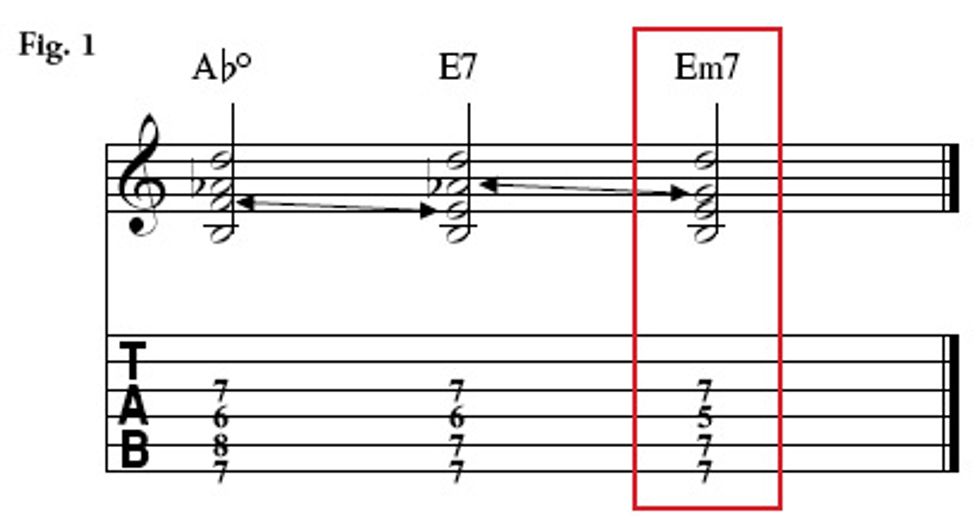
In Fig. 2, we shift this same chordal movement to the 4–3–2–1 string set. The voice leading is exactly the same in both examples, with F moving to E and then Ab (or G#) moving to G. I have placed arrows to indicate these movements.
Download Example Audio 2...
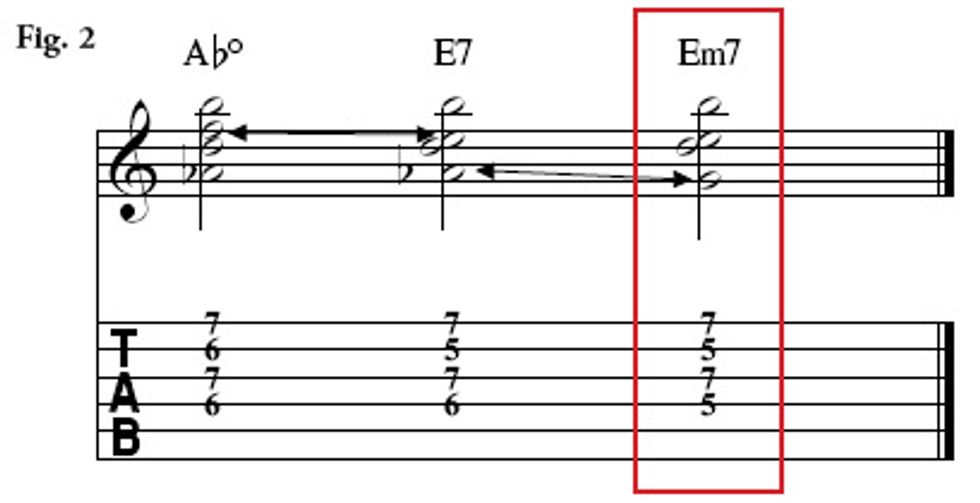
We can see the result of combining both Em7 (or G6) voicings in Fig. 3. The upper bracket indicates the shape from Fig. 2 and the lower bracket indicates the shape from Fig. 1.
Download Example Audio 3...
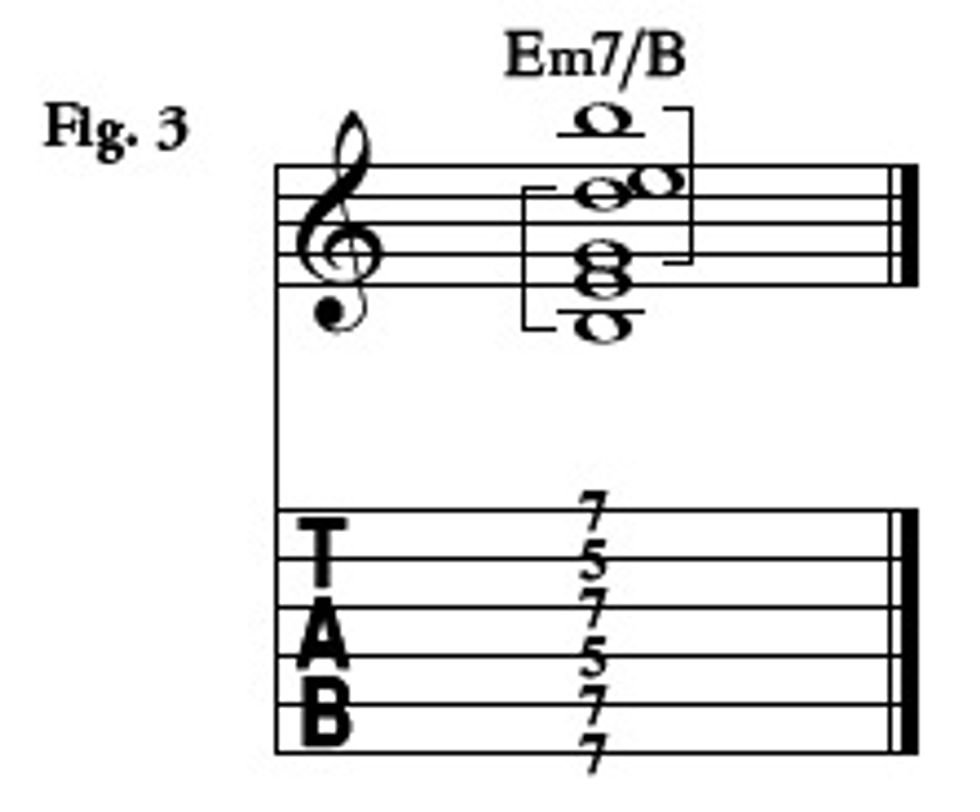
Chord forms and linear patterns are very similar. Both have specific shapes, and once they become familiar, these shapes begin to appear as inversions and transpositions across different areas of the fretboard. You can see Fig. 4 as an example of how to combine two separate linear arpeggios—both of the forms illustrated with vertical brackets in Fig. 1 now appear horizontally. The arpeggios appear in red (vertically beamed lower) while the upper beams hold melodic additions completing the full pattern.
Download Example Audio 4...

Once again, it’s essential to remember that the pattern in Fig. 4 is not in any way related to scalar or modal techniques. It is the result of many years of familiarity with chordal inversions, their shapes, substitutions, as well as their positions. Fig. 5 is the pattern we’ve discussed when viewed in a standard format. It includes the addition of an Em9 as the improvisational topic because within the pattern we have an F#, and it suggests a shape that’s very close to that particular chord form.
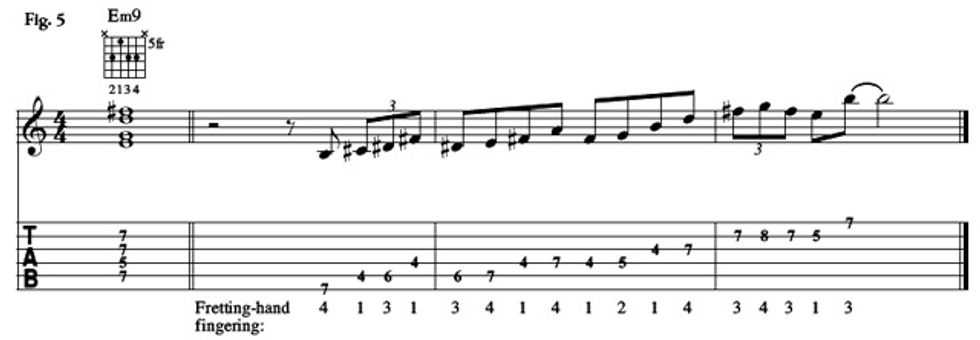
Last but not least, it’s absolutely essential to bring to your attention that although this particular study on pattern construction is effective, it’s not how I build a solo. What I’ve chosen to share is more like the analysis of a pattern after it’s been played. Remember, it emerged at a moment’s notice and the most important facets of its description hopefully convey greater insight on alternatives, as well as on the prerequisites that have prevailed. I’ll see you next time!
 Pat Martino
Pat MartinoSince his first recording as a leader in 1967, Pat Martino has constantly pushed the limits of jazz guitar with his flowing technique and powerful, muscular tone. Showing no signs of slowing down, Martino still travels the world performing and giving lectures about his approach to the guitar. Currently, Martino is working on an autobiography and serving as adjunct faculty at the University of the Arts in Philadelphia. For more info, visit patmartino.com.



